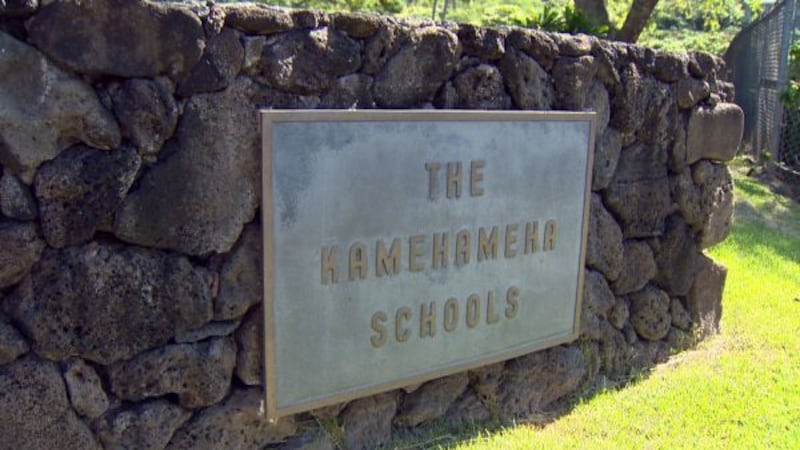State develops action plan as lava approaches key Hawaii Island highway
KAILUA-KONA (HawaiiNewsNow) - The state has a plan to close a portion of Daniel K. Inouye Highway on Hawaii Island if lava from the Mauna Loa eruption approaches, officials announced Tuesday.
As of 8 a.m. Wednesday, Hawaii Volcano Observatory reported the lava flow on Mauna Loa’s northeast flank is above 7,000 foot elevation and more than 3 miles from Daniel K. Inouye Highway.
If the lava does cut through the highway, it would have a major impact on the island’s infrastructure and Hawaii Island Mayor Mitch Roth is asking residents to consider what alternatives they’d use.
The state Transportation says if necessary, it would close the highway between the 8.8 and 21 mile markers. Barricades would go up at both points and be manned by law enforcement and DOT personnel.
At this time the highway remains open in both directions.
Currently, flows are traveling at less than 1 mph and flows were about 5 to 6 miles long. They’ve already crossed a private road, cutting off access and power to an important global climate monitoring station.
The state Department of Land and Natural Resources said lava also crossed Old Kona Highway at around 11 p.m. Tuesday. It’s a dirt road that crosses the Mauna Loa Forest Reserve.
Meanwhile on Tuesday, officials stressed the eruption does not pose a threat to downslope communities.
Because of that, Hawaii Island closed two emergency shelters that were opened for those who opted to voluntarily evacuate. Authorities also stressed the importance of vigilance as the eruption continues.
“This has been a very fluid event and things change very quickly,” Roth said.
“That’s why we’re trying to be as conservative as we can.”
The biggest impact to Hawaii Island from the eruption so far appears to be the throngs of spectators gathered along Daniel K. Inouye Highway and flocking to Hawaii Volcanoes National Park to see the fiery show.
There was also a growing threat of vog, particulates and Pele’s hair impacting downwind areas.
Ken Hon, Hawaiian Volcano Observatory scientist-in-charge, said that four fissures have opened as part of the eruption but only two are active: Fissure no. 3 — which he described as the “main” fissure that’s spewing lava up to 100 feet into the air — and a smaller, fourth fissure that opened up downrift early Tuesday.
This image, taken during an early morning overflight on 30 November 2022, shows Fissure 3, the dominant source of activity. As of 7 a.m. HST, the lava fountains reach 65-82 feet and feed a lava flow moving to the northeast at 0.08 miles per hour.#MaunaLoa #MaunaLoaErupts pic.twitter.com/Uvpt3LqMzH
— USGS Volcanoes🌋 (@USGSVolcanoes) November 30, 2022
No schools are closed as the eruption continues.
And dozens of residents who opted to voluntarily evacuate have returned to their homes.
Hon said Monday afternoon that the eruption was moving into the northeast rift zone, an announcement that alleviated fears communities in the southwestern rift zone would be impacted by the eruption.
Lava flows in southwestern rift region could reach population centers within hours.
By comparison, it would take weeks to months for lava flows from the summit to reach population areas in the northeast rift zone. The last eruption of Mauna Loa in 1984 also flowed into the northeast rift zone.
The lava stopped within four miles of Hilo.
Could that happen again? That isn’t yet clear.
Authorities predict this eruption could last two weeks, but stress things could change.
KEY ERUPTION DETAILS:
- The eruption began about 11:30 p.m. Sunday in Mokuaweoweo, the summit caldera of the volcano. Lava has largely been contained to the caldera, but has also migrated to a rift zone on the northeast side.
- As of 9 a.m. Tuesday, two of four fissures that opened were active. The lava is still above the 10,000 foot elevation and about 6 miles away from Saddle Road.
- The eruption did cause flight disruptions. Southwest canceled most flights into and out of Hilo on Monday, but anticipated operations to fully resume Tuesday. Hawaiian Airlines has not canceled flights.
The eruption comes after months of elevated earthquake activity at Mauna Loa.
On Sunday night, U.S. Geological Survey webcams at the summit captured the birth of the eruption as a long fissure opened and fountains spewed lava onto the caldera floor, now completing covered.
CONTINUING COVERAGE:
- ‘It’s epic’: People flock to view Mauna Loa eruption as lava flow lights up sky
- Mauna Loa eruption comes after longest quiet period in recorded history
- PHOTOS: Hawaii Island residents awake to fiery spectacle of Mauna Loa eruption
- Hawaii Island schools remain open; DOE closely monitoring eruption impacts
Hon said just in case, residents in downslope communities should have a plan if they have to evacuate. They should gather important papers and ensure their family members know where they’ll go if they need to leave.
For details on volcano hazard zones, click here.
The 13,681-foot Mauna Loa volcano had been rumbling more in the last several months, prompting many to believe an eruption was imminent. The 1984 Mauna Loa eruption also began within the Mokuaweoweo summit.
Fissures eventually opened on the mountain’s northeast rift zone, sending lava flows snaking toward the Hilo area. None of the flows reached the outskirts of Hilo by the time the eruption ended, about 20 days after it began.
VIEWER-SUBMITTED IMAGES:
This is a developing story. Check back for updates.
Copyright 2022 Hawaii News Now. All rights reserved.








